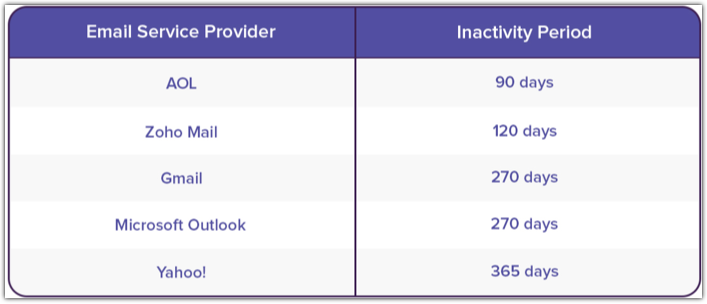Email Spam Traps Explained
Spam traps are used to identify which marketers are sending spam. A spam trap looks like a standard email address, but doesn't respond to emails or sign up for mailing lists, so when it receives an email, the sender is identified as a spammer. Unfortunately, marketers with disorganized mailing lists can also find themselves caught in these traps.
Once you have hit a spam trap, the impact to your deliverability is huge, and it can take a while for your domain's reputation to recover.
Spam trap types
There are two types of spam trap:
- Pristine/pure spam trap: If you repeatedly hit these spam traps, you could have a real tough time winning your reputation back. These spam trap addresses are created with the intent to catch spammers, so an impacted domain may find itself blacklisted.
- Recycled spam trap: These are previously active email addresses that have been untouched for many years. Email providers will sometimes convert these dead email addresses into spam traps. Though the immediate consequences are not as severe as a pure spam trap, it will still be considered a spam hit and your reputation will be penalized.
The permitted period of inactivity after which active email addresses are converted into dead email address varies between different email service providers. Tabulated below are the inactivity period of few email services providers.


For further references :

Who owns these spam traps?
Spam traps are owned by Internet Service Providers (ISPs), Email Service Providers (ESPs), and anti-spam agencies like Spamhaus. These are the groups you must negotiate with if you hit a spam trap and want to clear your reputation.
What if I hit a spam trap?
Unfortunately, it is almost impossible to know whether you have hit a spam trap. No ESP will explicitly declare that you've hit one, or give you the spam trap's email address. You may get a hint that you've hit a spam trap (e.g., all emails to a particular email service are being blocked). If this happens, follow these steps:
1. Send opt-in emails to all contacts to double check that they're all interested in your emails. Anyone who doesn't confirm should be removed from your list.
2. Remove all unengaged/inactive email addresses from your lists. As a general rule, any email address left inactive for a period of three months is considered inactive by most email providers.
How did I get a spam trap in my mailing list?
Honestly, it could happen to anyone. The best thing you can do is to avoid indiscriminate marketing processes and techniques. Here are a few things to look out for:
- If you don't use a double opt-in process, or have a very disorganized process, your chances of encountering spam traps are increased.
- Role/group addresses are used widely as spam traps to catch marketers with poor list collection techniques.
- Sending emails to inactive contacts greatly increases your chances of hitting a recycled spam trap.
- Manually entering email addresses into your mailing lists may lead to the entry of spam traps as well.
- Web scraping is a poor marketing technique that gives you a very high probability of encountering spam traps.
- Purchasing mailing lists is a sure fire way to hit spam traps. Spam addresses are likely present in these lists.
How can I avoid spam traps?
If you want to make sure you don't hit any spam traps, follow this advice:
- Use a double-opt in process when adding contacts to your mailing list. This is the best way to ensure you never end up with spam traps in your list.
- Make sure to avoid role/group address in your mailing list. Try to acquire personal email addresses with the consent of your contacts.
- Send opt-in emails to inactive email addresses and remove any addresses that do not respond.
- Avoid manually entering email addresses.
- Never incorporate purchased lists or web scraping techniques to expand your mailing lists.
Related Articles
Email Bounces Explained
Bounces occur when sent emails cannot be delivered. Typically, the email server will send you an error message, detailing the reason for the bounce. To learn more about this mechanism, let's walk through the process of sending an email and where ...Recommendations for "warming up" your email sender domain
How to warm up your email sender domain... We know that as marketers, you want to send large volumes of emails and achieve inbox placement. When mailbox providers receive emails, they consider the reputation of a sender domain to make inbox ...Email Authentication in ZohoCRM
You will now be able to authenticate your domains and subdomains. It will greatly reduce the chances of your email going to spam, and bring about better deliverability for your emails. To authenticate your emails sent from Zoho CRM, you need to ...Email Message Headers Overview
The following post will assist your understanding of email message headers, which can be helpful when troubleshooting why Zoho emails are landing in Spam Folders: Message headers give away some important details like: Source of an email (From ...CAN-SPAM Act: A Compliance Guide for Business from the Federal Trade Commission
Do you use email in your business? The CAN-SPAM Act, a law that sets the rules for commercial email, establishes requirements for commercial messages, gives recipients the right to have you stop emailing them, and spells out tough penalties for ...